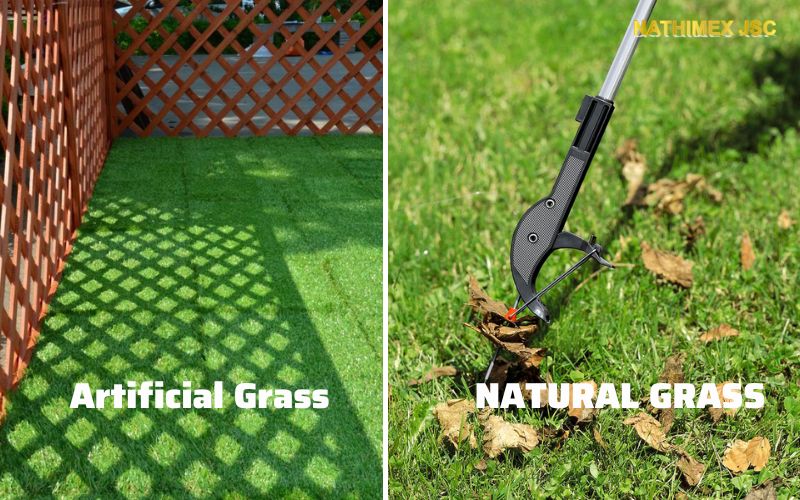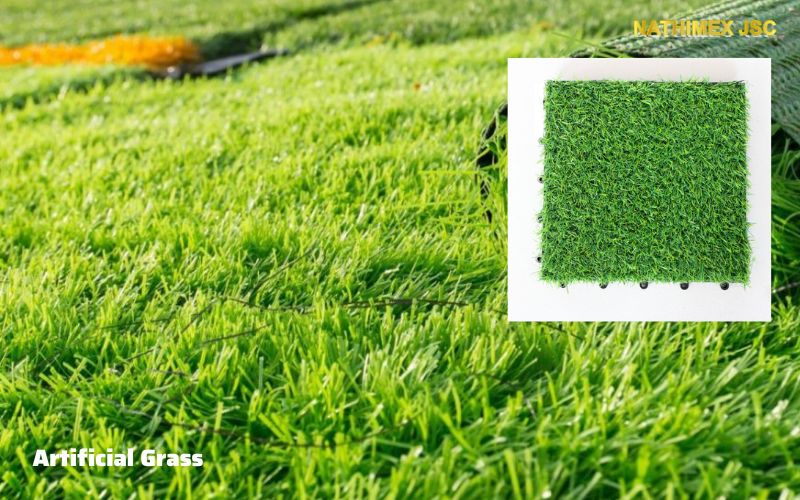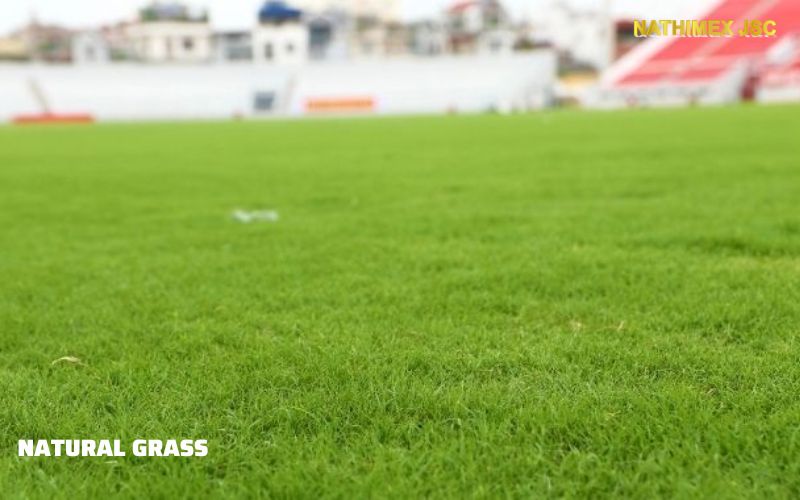Choosing between artificial grass and natural grass can be a tough decision, as both types of grass have their own unique advantages and disadvantages. In this article, we'll compare and contrast the two types of grass in terms of price, function, and effectiveness, and help you make an informed decision.
-
Price
When it comes to the price of artificial grass versus natural grass, there are several factors to consider. While the initial cost of artificial grass installation may be higher than natural grass, the long-term cost analysis shows that artificial grass is more cost-effective in the long run.
One of the main reasons for this is that artificial grass does not require mowing, watering, or fertilizing. These maintenance tasks are necessary for natural grass, which can be costly and time-consuming. The cost of mowing, fertilizing, and watering can add up over time, especially for larger areas of grass. On the other hand, artificial grass requires minimal maintenance, which can save you both time and money in the long run.
Another factor to consider is the durability of artificial grass compared to natural grass. Artificial grass is more durable and longer-lasting than natural grass. Artificial grass can last up to 20 years with proper maintenance, whereas natural grass typically only lasts between 5-7 years. This means that, in the long run, artificial grass can be more cost-effective than natural grass because you won't have to replace it as often.
The cost of materials and installation also plays a role in the price difference between artificial and natural grass. The materials used for artificial grass are more expensive than those used for natural grass. The installation process for artificial grass also requires specialized equipment and skilled labor, which can add to the cost.
However, the cost of installation and materials for artificial grass has been decreasing in recent years, making it more accessible to homeowners and businesses. Furthermore, artificial grass can be customized to fit any space, so you don't have to worry about buying more than you need or paying for extra maintenance and resources.

It's also worth considering the impact of weather conditions on the cost of natural grass versus artificial grass. In areas with extreme weather conditions, natural grass may require more maintenance and resources, which can increase the cost. For example, if you live in an area with heavy rainfall, you may need to invest in drainage systems for your natural grass, which can be costly. In contrast, artificial grass is designed to withstand adverse weather conditions, making it a more cost-effective option in the long run.
Ultimately, when it comes to the price of artificial versus natural grass, it's important to weigh the long-term costs and benefits of each option. While artificial grass may have a higher upfront cost, it can be more cost-effective in the long run due to its durability and low maintenance requirements. Natural grass may have a lower upfront cost, but its maintenance requirements and shorter lifespan can add up to higher costs over time.
-
Function
The functionality of artificial grass and natural grass varies significantly depending on the purpose it's used for. Artificial grass is ideal for sports fields, residential lawns, commercial areas, etc. It is low-maintenance, requires no watering, and looks green and lush all year round. On the other hand, natural grass provides an authentic and natural look that is ideal for gardens, parks, and other outdoor spaces. It also has several environmental benefits such as filtering pollutants, reducing soil erosion, and improving air quality.
When it comes to sports fields, artificial grass is often preferred due to its durability and ability to withstand heavy foot traffic. It is also consistent in terms of surface quality, making it safer for athletes to play on. Natural grass, on the other hand, can be unpredictable, especially in wet or dry conditions, which can increase the risk of injury for players.
For residential lawns, artificial grass is an excellent option for those who want a low-maintenance lawn that always looks perfect. Natural grass, however, provides a more natural and authentic look that many homeowners prefer. Moreover, natural grass can be more eco-friendly, as it helps reduce carbon emissions, provides a habitat for wildlife, and enhances biodiversity.

-
Effectiveness
The effectiveness of artificial grass and natural grass varies significantly depending on the environmental impact, water usage, maintenance requirements, and lifespan. Artificial grass has a lower environmental impact than natural grass, as it requires no watering, pesticides, or fertilizers. It is also made from recycled materials, making it a sustainable and eco-friendly option. Moreover, artificial grass does not produce any carbon emissions and does not contribute to air pollution. In contrast, natural grass requires a lot of water and maintenance, which can be detrimental to the environment. However, natural grass has a higher aesthetic value and contributes to the local ecosystem by providing a habitat for wildlife.
Water usage is another critical factor to consider when choosing between artificial and natural grass. Artificial grass requires no watering, making it an excellent option for areas with water shortages or restrictions. Natural grass, however, requires regular watering to keep it healthy and green, which can be costly and unsustainable in areas with limited water resources.
Maintenance requirements are another factor to consider when choosing between the two types of grass. Artificial grass requires minimal maintenance, as it does not need mowing, fertilizing, or watering. In contrast, natural grass requires regular mowing, fertilizing, and watering, which can be time-consuming and labor-intensive. Artificial grass is also more durable and resilient than natural grass, making it less prone to damage from foot traffic or adverse weather conditions.
Lastly, the lifespan of artificial and natural grass is another important consideration. Artificial grass typically lasts up to 20 years with proper maintenance, whereas natural grass typically lasts only 5-7 years. This means that artificial grass is a more long-term investment and can save you money in the long run.

Choosing between artificial and natural grass ultimately depends on your specific needs and preferences. If you're looking for a low-maintenance, durable, and eco-friendly option, then artificial grass may be the right choice for you. However, if you value a natural and authentic look and don't mind the upkeep, then natural grass may be the better option. By weighing the factors we've discussed, you can make an informed decision and choose the right type of grass for your home or business. Whether you choose artificial or natural grass, both have their own unique advantages and can enhance the beauty and functionality of your outdoor space.
